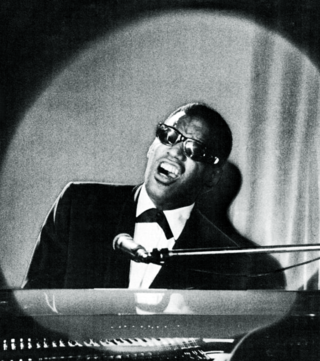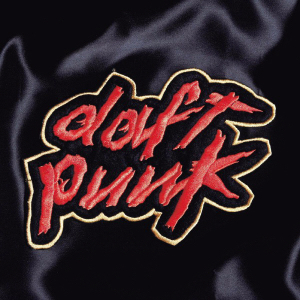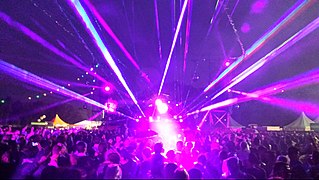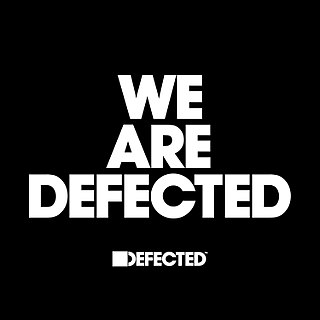Related Research Articles

Disco is a genre of dance music and a subculture that emerged in the 1970s from the United States' urban nightlife scene. Its sound is typified by four-on-the-floor beats, syncopated basslines, string sections, brass and horns, electric piano, synthesizers, and electric rhythm guitars.
House is a genre of electronic dance music characterized by a repetitive four-on-the-floor beat and a typical tempo of 120-130 beats per minute as a re-emergence of 1970's disco. It was created by DJs and music producers from Chicago's underground club culture and evolved slowly in the early/mid 1980s, and as DJs began altering disco songs to give them a more mechanical beat. By early 1988, House became mainstream and supplanted the typical 80s music beat.

Soul music is a popular music genre that originated in the African American community throughout the United States in the late 1950s and early 1960s. It has its roots in African-American gospel music and rhythm and blues. Soul music became popular for dancing and listening, where U.S. record labels such as Motown, Atlantic and Stax were influential during the Civil Rights Movement. Soul also became popular around the world, directly influencing rock music and the music of Africa. It also had a resurgence in the mid-to late 1990s with the subgenre neo-soul, which added modern production elements and influence from hip-hop.
Hi-NRG is a genre of uptempo disco or electronic dance music (EDM) that originated in the United States during the late 1970s and early 1980s.
Dance-pop is a subgenre of pop music that originated in the late 1970s to early 1980s. It is generally uptempo music intended for nightclubs with the intention of being danceable but also suitable for contemporary hit radio. Developing from a combination of dance and pop with influences of disco, post-disco and synth-pop, it is generally characterised by strong beats with easy, uncomplicated song structures which are generally more similar to pop music than the more free-form dance genre, with an emphasis on melody as well as catchy tunes. The genre, on the whole, tends to be producer-driven, despite some notable exceptions.

Homework is the debut studio album by the French electronic music duo Daft Punk, released on 20 January 1997 by Virgin Records and Soma Quality Recordings. It was later released in the United States on 25 March 1997. As the duo's first project on a major label, they produced the album's tracks without plans to release them, but after initially considering releasing them as separate singles, they considered the material good enough for an album.
Funky house is a subgenre of house music that uses disco and funk samples, a funk-inspired bass line or a strong soul influence, combined with drum breaks that draw inspiration from 1970s and 1980s funk records. The use of disco strings are also common in the genre, although not always. Funky house uses specific techniques and a specific sound, characterized by bassline, swooshes, swirls and other synthesized sounds which give the music a bouncy tempo with around 128 BPM.

Italo disco is a music genre which originated in Italy in the late 1970s and was mainly produced in the early 1980s. Italo disco evolved from the then-current underground dance, pop, and electronic music, both domestic and foreign and developed into a diverse genre. The genre employs electronic drums, drum machines, synthesizers, and occasionally vocoders. It is usually sung in English, and to a lesser extent in Italian and Spanish.

Liquid funk, liquid drum & bass, liquid DnB, melodic drum & bass, or sometimes just liquid is a subgenre of drum and bass. While it uses similar basslines and bar layouts to other styles, it contains fewer bar-oriented samples and more instrumental layers, harmonies, melodies and ambiance, producing a sentimental atmosphere directed at home listeners as well as nightclub and rave audiences. Music genres such as jazz, soul and sometimes blues have a pivotal influence on liquid funk.
Eurodisco is the variety of European forms of electronic dance music that evolved from disco in the late 1970s, incorporating elements of pop and rock into a disco-like continuous dance atmosphere. Many Eurodisco compositions feature lyrics sung in English, although the singers often share a different mother tongue.
French house is a style of house music devised by French musicians in the 1990s. It is a form of Euro disco and a popular strand of the late 1990s and 2000s European EDM scene. The defining characteristics of the genre are filter and phaser effects both on and alongside samples from late 1970s and early 1980s European disco tracks. Tracks sometimes contained original hooks inspired by these samples, providing thicker harmonic foundations than the genre's forerunners. Most tracks in this style are in 4
4 time and feature steady four on the floor beats in the tempo range of 110–130 beats per minute. French house is similar to future funk, although there are some key differences. Purveyors of French house include Daft Punk, David Guetta, Bob Sinclar, Martin Solveig, Stardust, Cassius, The Supermen Lovers, Modjo, Justice, Air and Étienne de Crécy.

Dimitri from Paris is a French music producer and DJ of Greek descent. His musical influences are rooted in 1970s funk and disco sounds that spawned contemporary house music, as well as original soundtracks from 1950s and 1960s movies such as Breakfast at Tiffany's, La Dolce Vita and The Party, which were sampled in his album Sacrebleu. Dimitri fused these sounds with electro and block party hip hop he discovered in the 1980s.
Electronic dance music (EDM) is a broad range of percussive electronic music genres originally made for nightclubs, raves, and festivals. It is generally produced for playback by DJs who create seamless selections of tracks, called a DJ mix, by segueing from one recording to another. EDM producers also perform their music live in a concert or festival setting in what is sometimes called a live PA. Since its inception EDM has expanded to include a wide range of subgenres.

Dance music is music composed specifically to facilitate or accompany dancing. It can be either a whole piece or part of a larger musical arrangement. In terms of performance, the major categories are live dance music and recorded dance music. While there exist attestations of the combination of dance and music in ancient history, the earliest Western dance music that we can still reproduce with a degree of certainty are old-fashioned dances. In the Baroque period, the major dance styles were noble court dances. In the classical music era, the minuet was frequently used as a third movement, although in this context it would not accompany any dancing. The waltz also arose later in the classical era. Both remained part of the romantic music period, which also saw the rise of various other nationalistic dance forms like the barcarolle, mazurka, ecossaise, ballade and polonaise.
Post-disco is a term to describe an aftermath in popular music history circa 1979–1986, imprecisely beginning with an unprecedented backlash against disco music in the United States, leading to civil unrest and a riot in Chicago known as the Disco Demolition Night on July 12, 1979, and indistinctly ending with the mainstream appearance of new wave in 1980. During its dying stage, disco displayed an increasingly electronic character that soon served as a stepping stone to new wave, old-school hip hop, Euro disco, and was succeeded by an underground club music called hi-NRG, which was its direct continuation.
Boogie is a rhythm and blues genre of electronic dance music with close ties to the post-disco style, that first emerged in the United States during the late 1970s to mid-1980s. The sound of boogie is defined by bridging acoustic and electronic musical instruments with emphasis on vocals and miscellaneous effects. It later evolved into electro and house music.

Defected Records is a British independent record label specialising in house music recordings, compilation albums, events, publishing, artist booking and management. One of the longest running independent labels of its kind, Defected has paved the way for house music in the UK and remained a well-respected constant in the music industry for over 20 years.
Johan Linus Eklöw, better known by his stage name Style of Eye, is a Swedish DJ, record producer, songwriter and percussionist. He was part of the electropop music group Galantis from 2012 until the end of 2021.
References
- 1 2 3 "Beatport launches nu disco / indie dance genre page" (Press release). Beatport. 2008-07-30. Archived from the original on 2008-08-07. Retrieved 2008-08-08.
Beatport is launching a new landing page, dedicated solely to the genres of "nu disco" and "indie dance".
- 1 2 3 4 5 "Spin Magazine – February 2008 – Reviews (Page 46)". Spin: Digital archives. Spin Magazine. Archived from the original on 16 April 2009.
- 1 2 3 4 5 6 7 "The Joy Of Nu Disco". www.prsformusic.com. Retrieved 2020-05-13.
- ↑ Lowrey-Rasmussen, Logan (2016-06-29). "3 Nu Disco / Disco House Tracks That Keep the Funk Alive In 2016". relentlessbeats.com. Retrieved 2019-02-20.
- ↑ Hutchinson, Kate (9 June 2016). "Dan Lissvik: Midnight review – suitably eclectic Balearic beat revival". The Guardian . Retrieved 20 February 2019.
- 1 2 Hervé (12 August 2011). "Moombahton, Nu-Jungle, Future Garage? Let Hervé explain". The Guardian. Retrieved 20 February 2019.
- 1 2 3 4 Grodzins, Quinn (2017-08-14). "What We Like – Nu-Disco". EDM Identity. Retrieved 2020-05-13.
- 1 2 3 "A 10 Track Guide To The Funky World Of Old-School Disco Re-Edit Services". Telekom Electronic Beats. 2019-06-26. Retrieved 2021-03-28.
- ↑ "Starter: Todd Terje: 15 Essential Rarities." Pitchfork. 19 February 2014. Retrieved 2015-12-08.
- ↑ "10 of the most influential disco labels of the last decade". Mixmag. Retrieved 2021-03-28.
- 1 2 3 4 5 6 7 8 9 10 11 12 "Every summer is 'The Summer Of Disco': Your essential 'Nu-Disco' primer (part one)". DangerousMinds. 2013-06-04. Retrieved 2020-05-13.
- 1 2 3 4 5 "MN2S Genre Focus: Nu Disco | Features". MN2S. 2017-05-30. Retrieved 2020-05-13.
- ↑ Nash, Rob (2002-10-19). "Clubs: New Releases: Tutto Matto Hot Spot". The Independent.
- ↑ "Top 100 albums of the '00s". Resident Advisor . January 25, 2010. Retrieved March 19, 2010.
- ↑ "The 100 Best Albums of the 2000s". Fact . December 1, 2010. Retrieved December 1, 2010.
- ↑ "An Introduction to Norwegian Disco". Pitchfork. 31 August 2017. Retrieved 2020-05-13.
- 1 2 3 "A short guide to Norwegian space disco". Red Bull. Retrieved 2020-05-13.
- ↑ Baines, Josh (2016-04-13). "A Bullshitter's Guide to Cosmic Disco". Vice. Retrieved 2020-05-13.
- ↑ Hutchinson, Kate (2016-06-09). "Dan Lissvik: Midnight review – suitably eclectic Balearic beat revival". The Guardian. ISSN 0261-3077 . Retrieved 2020-05-13.
- ↑ "Aeroplane Biography". ResidentAdvisory. Retrieved 20 February 2019.
- ↑ Lynskey, Dorian (2010-07-29). "Vito de Luca of nu-disco hitmakers Aeroplane on becoming a one-man band". The Guardian. ISSN 0261-3077 . Retrieved 2020-05-13.
- 1 2 "Lifelike". Storms DJs. Retrieved 20 February 2019.
- ↑ Mutton, Troy. "Porsches – Horses (Lifelike Remix) [Premiere]". Pilerats. Retrieved 20 February 2019.
- ↑ "KRIS MENACE : Features – CD – COMPUPHONIC – Forced Exposure". www.forcedexposure.com. Retrieved 2020-05-13.
- ↑ Andrew Zistler (2017-11-28). "An Interview With LIFELIKE". NewRetroWave – Stay Retro! | Live The 80's Dream!. Retrieved 2020-05-13.
- ↑ "Miami Horror: All Possible Futures". PopMatters. 2015-05-06. Retrieved 2020-05-13.
- ↑ "Bag Raiders prep debut album". Resident Advisor. Retrieved 2020-05-13.
- ↑ CU; Pete (2019-09-04). "Beatport Updates its 'Nu Disco' and 'Indie Dance' Genre Categories". CU. Retrieved 2020-05-13.
- ↑ "Coma Cat – Defected". Defected Records. Retrieved 20 February 2019.
- 1 2 3 4 "It's Happy, It's Danceable and It May Rule Summer". The New York Times. 30 May 2013.
- ↑ Lansky, Sam (October 23, 2014). "Review: 1989 Marks a Paradigm Swift". Time . Archived from the original on November 1, 2014. Retrieved November 1, 2014.
- ↑ "Calvin Harris: Funk Wav Bounces Vol. 1". Spectrum Culture. 2017-07-27. Retrieved 2020-05-13.
- ↑ WHETHAM 03/30/20 9:26pm, ALEX. "Dua Lipa's 'Future Nostalgia' is a slightly disappointing nu-disco dance party". www.ubspectrum.com. Retrieved 2020-05-13.
{{cite web}}: CS1 maint: numeric names: authors list (link) - ↑ "Dua Lipa Chart History". Billboard. 2020-05-18. Retrieved 2020-05-18.
- ↑ Borrelli, Gianni (7 October 2020). "Róisín Murphy on her new album 'Róisín Machine' and why we're all living in a 'simulation'". Pitchfork. Retrieved 19 July 2022.
- ↑ "Pop Icon Kylie Minogue Releases Elegant Nu-Disco Anthem 'Say Something,' Reveals 'DISCO' Album Details – Culture Fix" . Retrieved 2022-12-25.
- ↑ Ruiz, Matthew Ismael (21 May 2020). "Studio 54 Launches Record Label". Pitchfork. Retrieved 2020-05-21.
- 1 2 York, Edward Helmore in New (27 April 2013). "Disco's back as Nile Rodgers tops chart again". the Guardian. Retrieved 2015-12-08.
- 1 2 "Everything You Ever Needed To Know About Nu-Disco: Luke the Knife's To". The Untz. 16 January 2014. Retrieved 2015-12-08.
- ↑ "Disco, Nu-Disco, What's the difference?". Who's Jack?. 16 February 2012. Retrieved 2015-12-08.
- ↑ "Nuphonic Records". Encyclopedia of Popular Music. January 2009. doi:10.1093/acref/9780195313734.013.71680 (inactive 31 January 2024). ISBN 978-0-19-531373-4.
{{cite journal}}: CS1 maint: DOI inactive as of January 2024 (link) - ↑ "Shut up and sell the hits: Jonathan Galkin on 15 years of DFA Records". the Guardian. December 2015. Retrieved 2015-12-08.
- ↑ "ROCHE MUSIQUE". wanderlustparis.com. Archived from the original on 2015-12-10. Retrieved 2015-12-08.
- ↑ "How Daft Punk Saved Pop Music (and Doomed Us All) | SPIN". Spin. 28 May 2013. Retrieved 2015-12-08.
- ↑ "Dimitri from Paris | Biography & History | AllMusic". AllMusic. Retrieved 2015-12-08.
- ↑ "RA: Lindstrom". Resident Advisor. Retrieved 2015-12-08.
- ↑ "Every summer is 'The Summer Of Disco': Your essential 'Nu-Disco' primer (part two)". DangerousMinds. 2013-06-07. Retrieved 2015-12-08.